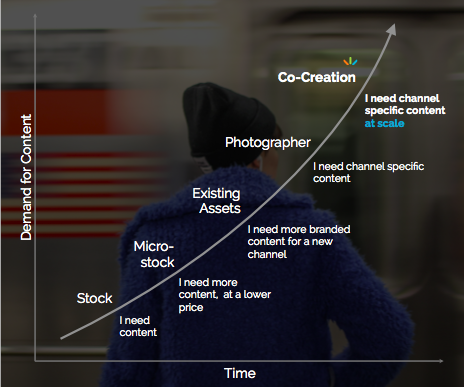Instagram's Ad Products May Break the Bank (But Not for the Reasons You Think)

By Grant Munro, FlashStock Technology
With the announcement of Instagram's new ad offering, brands must start changing how they think about advertising and how to tailor their content if they want to succeed on this platform.
Since its inception, Instagram has been a place where people go for inspiring content. Instagram's tremendous growth has been driven by the high quality of content that is produced by its users - its impressive engagement numbers prove this fact. In fact, Instagram themselves state that across 475 campaigns globally, ad recall from sponsored posts was 2.9 times higher than the Nielsen's norms for online advertising.
Introducing paid advertising into the Instagram user experience is no easy feat. The quality of paid content needs to be high or things will start to derail quickly. Since Instagram is a self-curated feed of high-quality content, users are wary of paid advertising forced upon them and will simply ignore mediocre content. Paid content will naturally clutter and disrupt an Instagramer's feed and consumers will be quick to ignore ads. Paid content needs to be of the same or better quality as the content users are already following.
Facebook and Instagram are aware of this, controlling both the amount of branded content promoted and the quality of content that ges out on their platform to date. Instagram meticulously reviews each campaign to ensure it meets the appropriate esthetic requirements. For clients who may need support strategically and in the production process, Instagram has full production capabilities to ensure that paid content is beautiful, unique and fits within the Instagram community's level of quality.
However, it looks like this system is going to change dramatically.
Facebook will be opening up the ad products to businesses and agencies directly.
No doubt, brands and businesses of all sizes will want to jump right in. Undoubtedly the quality of these images will be lower in aggregate, diminishing the overall user experience. These brands and businesses will quickly learn that blindly posting content will not work and learn the cardinal rule of Instagram:
Beautiful images showing a unique point of view with a consistent look and feel will perform well, and everything else will perform poorly.
Naturally, these same brands and businesses will want better content. This content comes at a cost. Working with agencies for all content, either paid or organic, comes with a hefty price tag. While this may be OK for content backed with a high media spend, costs are extremely prohibitive for everyday paid or organic content.
Stock desn't cut it as it is generic and ill-received amongst the Instagram community. Many brands will look to user generated content (UGC), but this option is extremely difficult to successfully execute. The consistency, quality, and look and feel don't generally match what you're looking for or the story you're trying to tell.

When organizations realize that they need content, they tend to look at what is available through stock and microstock photos. It's cheap and accessible content. While stock photos can be useful, it generally des not perform as well as branded content and is rarely a marketer's first choice.
Realizing that stock is not the answer, brands start to get creative and leverage existing assets. Piggybacking off of large campaigns or repurposing content that was created for another purpose are just a few ways these brands can have content on Instagram while controlling for costs. However, this may not work well on a platform like Instagram where users go to see things that they can't find anywhere else.
Many brands then evolve to working directly with photographers. Here they are able to build rapport with a few talented photographers and control the output as well as the look and feel. The drawback of this is the scale in which content can be produced. If you need content from different regions, countries, with diversity in creative and subject matter, you need to further evolve.
The next evolution is the co-creation model. In co-creation, you're tapping into a global network of contributors who create content on your behalf. You provide the scenarios you want covered and control for look and feel through curation. By leveraging the photographer's creativity within the content framework, you cut out many of the traditional costs you would pay if you went through a traditional agency without sacrificing quality.
As brands start to take Instagram more seriously and promoting content becomes an important part of their marketing mix, they will need to evolve their capabilities.
Grant Munro is the co-founder and CEO of FlashStock Technology, a provider of on-demand imaging for the world's leading brands. He has helped leading companies including AB InBev, Diageo, Estée Lauder, Xerox among many others, change the way they develop and source creative content.

Subscribe to Our Newsletter!
Latest in Social Media










